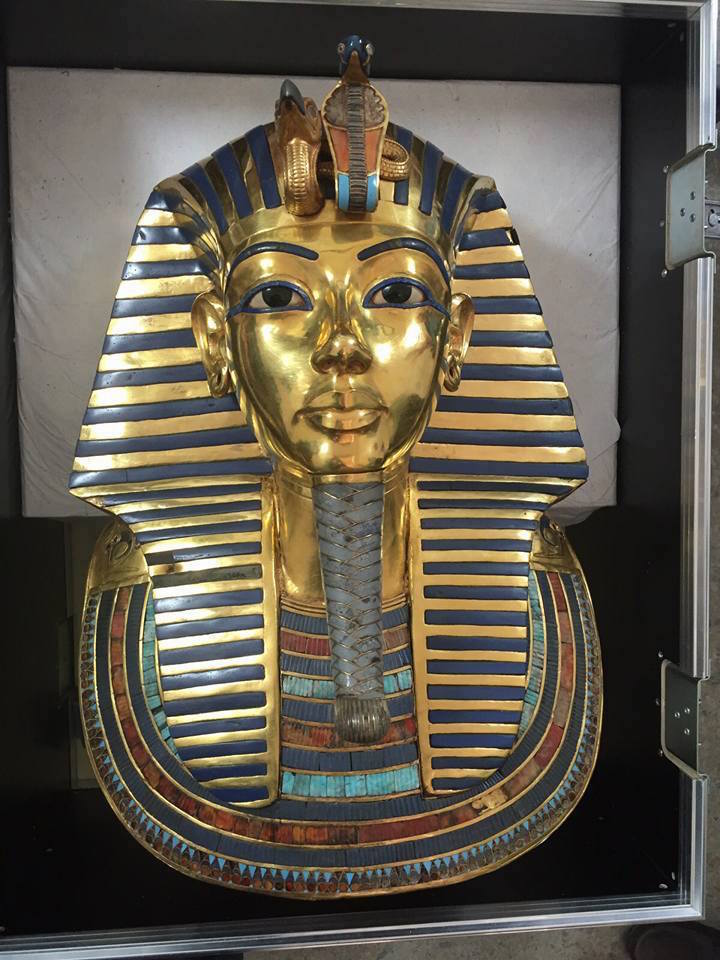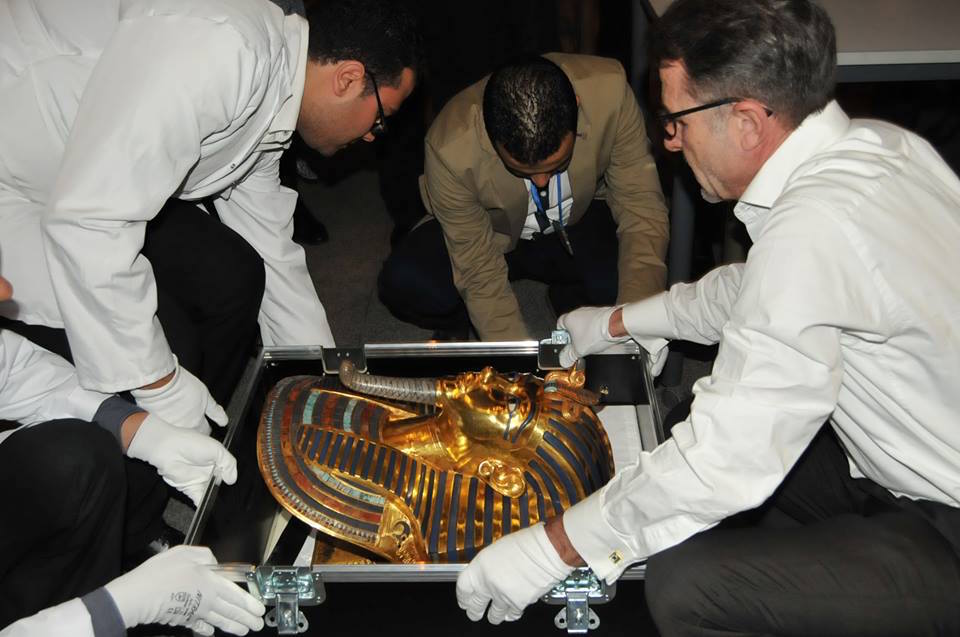The Beard Is Back: Beeswax Fixes King Tut's Broken Goatee

The imperial goatee on King Tutankhamun's golden burial mask is back in business after scientists reattached it with beeswax, according to the Egyptian Ministry of Antiquities.
The more than 3,300-year-old mask was damaged in August 2014 when the beard accidentally fell off during a routine cleaning. Staff workers at Cairo's Egyptian Museum mistakenly reattached it with epoxy glue, leaving scratch marks on the famous artifact after they used a spatula to wipe off the excess glue, Live Science reported in January.
But now, after a nine-week restoration, the mask has returned to public display at the museum, Antiquities Minister Mamdouh Eldamaty said at a news conference yesterday (Dec. 17) at the museum. [In Photos: The Life and Death of King Tut]
The restoration revealed newfound secrets about the mask, Eldamaty said. Researchers noticed a gold tube inside the royal beard, an intriguing structure that ancient Egyptians likely used to attach the beard to the rest of the mask, he said.

What's more, ancient Egyptians also used beeswax to fasten the beard to the mask, a technique replicated by the researchers during the restoration, Eldamaty said in a statement on Facebook.
King Tut, who ruled Egypt from 1332 B.C. to 1323 B.C., has fascinated the public since British archaeologists Howard Carter and George Herbert discovered the boy king's nearly intact tomb in 1922. However, the beard on the funerary mask — a symbol that kings used to identify themselves to Osiris, the god of the underworld — was detached at the time it was found inside the tomb, according to National Geographic.
"The 2014 damage was exaggerated, since the beard was previously detached as the examination showed," said Friederike Fless, the president of the German Archaeological Institute in Cairo, one of the German and Egyptian bodies that cooperated in the restoration process, according to National Geographic.
Sign up for the Live Science daily newsletter now
Get the world’s most fascinating discoveries delivered straight to your inbox.
The beard remained detached until 1946, when it was reconnected using a soft solder, National Geographic reported.
The researchers began the new restoration in October 2015, starting with a 3D scan to document the mask. Then, over a four-week period, they heated the metal mask and carefully removed the epoxy glue with wooden tools, National Geographic said.
Now that the mask is back on display, the scientists are preparing a scientific study that describes the entire restoration process, Eldamaty said in the statement.
Follow Laura Geggel on Twitter @LauraGeggel. Follow Live Science @livescience, Facebook & Google+. Original article on Live Science.

Laura is the archaeology and Life's Little Mysteries editor at Live Science. She also reports on general science, including paleontology. Her work has appeared in The New York Times, Scholastic, Popular Science and Spectrum, a site on autism research. She has won multiple awards from the Society of Professional Journalists and the Washington Newspaper Publishers Association for her reporting at a weekly newspaper near Seattle. Laura holds a bachelor's degree in English literature and psychology from Washington University in St. Louis and a master's degree in science writing from NYU.










